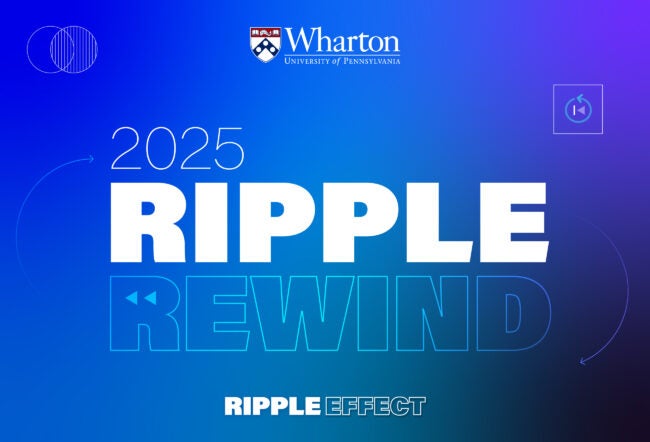The recently passed Dodd-Frank Act is one of the largest overhauls to the financial system since the Great Depression. In addition to prohibiting certain practices by financial institutions and restructuring the way the institutions are regulated, the law also addresses the consumer’s role in the financial markets. In fact, the official title of the bill, “The Dodd-Frank Wall Street Reform and Consumer Protection Act” makes it clear that consumers are top priority.
Much of the law still has to go into effect, and many aspects that involve consumers are not yet clearly laid out. Such a massive law begs the question: Can regulation really create better, more informed consumers? Observers agree that consumers need to be better educated when it comes to the financial markets. While it is unclear whose job it is to provide that education, most agree that if consumers were more financially literate, the recession and its aftermath might not have been so severe.
Well informed consumers “might have been a counter-vigilant factor to stop some of the excess that occurred” leading up to the recession, says Wharton marketing professor Leonard Lodish.
Whether or not the Frank-Dodd Act will create a more knowledgeable population remains to be seen, but the law contains ample measures aimed at protecting and educating the general public. The primary consumer-related aspect of the new law — and what takes 149 pages of the Act to explain — is the creation of the Consumer Finance Protection Board (CFPB). Its job, according to the legislation, is to “enforce federal consumer financial law consistently for the purpose of ensuring that all consumers have access to the markets for consumer financial products and services and that markets for consumer financial products are fair, transparent and competitive.”
To accomplish this goal, the board’s main functions will include conducting financial education programs; collecting, investigating and responding to consumer complaints, and researching and monitoring areas of the financial markets that affect consumers. One of the CFPB’s first tasks is to create a single mortgage disclosure form by combining paperwork created by the Real Estate Settlement Procedures Act and the Truth in Lending Act, and then oversee enforcement of these existing laws.
The Dodd-Frank Act also has several other consumer protection features that directly address certain activities blamed for the financial crisis. For example, new guidelines will be instituted to put an end to appraisal over-valuations and to stop predatory lending.
David Berenbaum, chief program officer with the Washington, D.C.-based consumer advocacy group the National Community Reinvestment Coalition, applauds all these new protections. He is particularly happy that predatory lending is finally being regulated at the federal level. “It really addresses responsible lending,” Berenbaum notes. “And that’s one of the most significant protections afforded to consumers.”
Additional consumer protections include the creation of an Office of Financial Education (under the new CFPB) and the Office of Investors Advocate (under the Securities and Exchange Commission), as well as the establishment of a formal complaint process for consumers.
Despite this laundry list of new protections, Wharton business and public policy professor Olivia Mitchell maintains that Congress could have done more to help consumers make educated choices rather than just sheltering them from bad practices. She says that with too many protections, consumers will not be motivated to educate themselves on financial matters and will simply rely on the professionals to follow the new rules. Mitchell suggests that the law could have included some sort of mandate for financial education in the schools along with increased funding for such programs.
“It’s an enormous beast of legislation,” Mitchell states. “But it’s more in the protective regulatory spirit than in the empowering spirit.”
A Failing Grade in Financial Literacy
Whether these new regulations can help create more informed consumers depends in part on just how educated and empowered Americans are when it comes to personal finance.
Several recent studies point out that consumers need quite a bit of help. According to a 2010 survey from the National Foundation for Credit Counseling, 34% of the 2,028 adults surveyed gave themselves a grade of C, D, or F for their knowledge of personal finance. And one-third of the homeowners surveyed said they were surprised to learn that the terms of their mortgage were different from what they had originally expected.
In a 2007 study conducted by Mitchell that surveyed 1,700 “early boomers” (ages 51-56), 43% of participants could not correctly divide lottery winnings among five people, and 82% of the participants could not calculate compound interest correctly on $200 in a savings account. Mitchell says that while most financial products compound interest, consumers typically tend to think of everything in simple interest terms, and do not factor in the additional interest dollars that accumulate year after year. “The level of financial literacy in this country is woefully poor. People have relied too much on others to take care of them,” she says, noting that these “others” include loan officers, brokers and financial professionals whom customers expect to have their best interests in mind.
John Wesley Hutchinson, Wharton marketing professor and faculty director of the Wharton Behavioral Lab, admits that even he has relied far too much on the experts on the other side of the table to make the right decisions. “Historically, you did not have to understand everything,” he points out. “Wharton professors don’t understand or even read all the fine print of their mortgages. We look over the documents and trust the loan officer to know what’s best.”
However, many of these thought-to-be-trusted loan officers have failed consumers who are now grappling with adjustable rate mortgages, inflated mortgage payments and, in many cases, foreclosure. Consumers need to learn to analyze on their own what is being escrowed on their mortgage payment and know the time frame for locking in interest rates, Hutchinson says, adding that as a result of the financial crisis, the public is realizing that they must take more responsibility for their financial decisions and are also slowly changing their spending and savings habits.
“Consumers are learning that they need to be better market participants,” Hutchinson says. “What we really need is a change in consumers’ attitude towards debt.”
But whose duty is it to create more informed consumers? Should it be up to the regulators? The schools? What about the financial institutions? Experts agree that while regulators can have a hand in creating more conversant financial consumers, they cannot do it alone.
Both Mitchell and Berenbaum believe that financial education should start in the schools, and that regulators can help by mandating certain requirements. “Schools do not adequately prepare consumers to understand the process and paperwork from basic banking to complex mortgages,” Berenbaum notes. As for state mandates, Utah, Virginia, Missouri and Tennessee all require at least a one-semester course in high school devoted to personal finance, and 20 other states require that personal finance at least be taught through another course, according to data from the Washington, D.C.-based JumpStart Coalition. However, the Dodd-Frank Act does not even touch on the idea of financial education curriculum, let alone mandate requirements.
“It’s been shown that when certain states have mandated financial education in high school, the young adults in those states are saving more, planning more and have more knowledge of interest rates,” Mitchell says, adding that the most important piece of information one can learn is understanding compound interest.
Berenbaum is also confident that mandated financial education would help improve overall financial literacy in the United States. And he notes that the most important concept that should be taught is an “understanding of the impact of debt,” since a low credit rating — which is the result of poorly managed debt — can significantly affect one’s ability to get everything from a cell phone contract to a reasonable interest rate on a mortgage.
According to a National Foundation for Credit Counseling 2010 survey, however, only 6% of adults responded that they had learned about personal finance in school. The most commonly cited source for personal finance education, at 41%, was parents.
Hutchinson maintains that such education should be coming from the financial institutions more than the schools. He would like to see banks do a better job of providing customers with the tools they need to make educated choices about financial products. One recent example of this kind of education, he says, is J.P Morgan Chase’s free Blueprint option on credit cards. Blueprint, introduced a year ago, allows customers to set up payment plans for their credit cards, more easily manage interest and also budget for future purposes.
Lodish suggests that rather than providing education, financial institutions need to be more transparent and upfront about certain risks and fees, noting that even the basics on the back of a credit card application are hard to decipher. “The question is, does the typical consumer know what he or she is buying and committing to?” he asks. “That’s why transparency is so important.”
Financial Labeling
Observers agree that besides being more transparent, financial institutions need to simplify the information they present to consumers. According to Mitchell, information presented as a percentage, such as interest on a savings account or a mutual fund fee, without any dollar figure attached, confuses consumers. She suggests that institutions should instead put rates and fees in real dollar terms. “We have to be smart about what information we provide. People understand dollars. We need to do that research on how to present financial information in a very simple matter.”
Hutchinson goes one step further, calling for a uniform measurement to compare different financial products. Such a standard would have to come through a mandate in regulation. He suggests giving every financial product — both for saving and for borrowing — a clearly labeled Annual Percentage Rate (APR). Hutchinson likens this to nutritional labeling that was mandated for most packaged food products in 1990. These changes forced every product — from candy to carrots — to include a label that says what percent of certain nutrients, based on a 2,000-calorie-a-day diet, the item contains. This change leveled the playing field for all food products, he says, and stimulated competition for the introduction of healthier options, including low-fat and reduced calorie products. But he acknowledges that while this labeling helped already health-conscious consumers make the right choices, it did little to persuade the rest of the population.
Nevertheless, Hutchinson predicts that a positive impact would result in the world of financial products if similar disclosures took effect. “Most good relationships start with good disclosure,” he notes. “If something changes to make buyers and sellers more knowledgeable, that should increase competition.”



